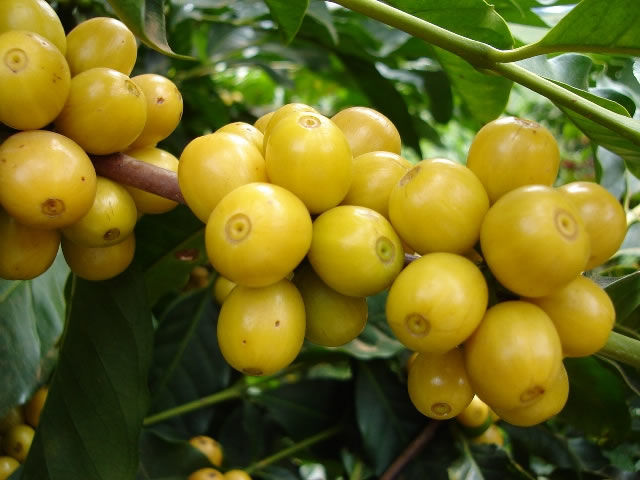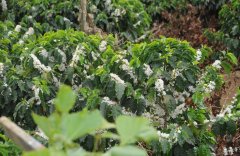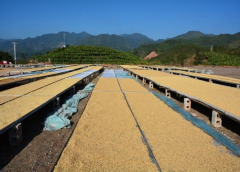Central American Nicaraguan and Honduran coffee flavor, suitable for how to make it
For professional baristas, please follow the coffee workshop (Wechat official account cafe_style)
The land bridge between Central America and North and South America consists of seven countries, namely Belize, Costa Rica, El Salvador, Guatemala, Honduras, Nicaragua and Panama. Seven Central American countries all produce coffee, of which Guatemala, Costa Rica and Honduras are among the top 10 global coffee exporters.
Coffee began to flourish in Central America in the 18th century, and this important economic product originated in Costa Rica around 1840. Since Central America became independent from Spain in 1821, there has been a lot of war. Costa Rica was far from the Spanish colonial capital Guatemala. On the contrary, Guatemala and El Salvador delayed coffee production because of the civil war. After that, the political dispute gradually subsided, and the Central American countries except Honduras began to produce coffee in the 19th century.
Central America has the natural advantages of sunshine, land, and mountains, and a sufficient working population, which makes the region unique in growing and producing high-quality coffee. In the late 19th century, coffee became an indicator of economic growth in Central American countries and passed the Coffee Promotion Act in an all-round way. With the most remarkable results in countries such as Costa Rica, El Salvador and Guatemala, coupled with the scientific and technological way of growing coffee, Central America has become one of the four largest coffee producing areas in the world.
Honduras
There are mainly small coffee manufacturers in Honduras, accounting for 60% of Hongguo's production. Manual collection collects 3 million bags of coffee every year, making it the second largest coffee exporter in Central America and the tenth largest coffee exporter in the world. Hongguo's coffee industry has a bearing on the livelihood of 100,000 families in Hongguo, brings 1 million jobs and creates a permanent economic foundation for Honduras.
Honduran coffee is divided into six major producing areas, spread in the west and south, namely Santa Barbara (Santa Barbara), Periso (El Paraiso), Copan (Copan), La Paz (La Paz) and Gongmayagua (Comayagua) and Olanqiu (Olancho), with an average planting height of more than 1100 meters above sea level, 100% Arabica species, 69% HG, and 12% SHG,19% CS. There are mainly Typica, Bourbon, Caturra, Villa Sarchi and Lempira brands.
Characteristic small, round, slightly bluish green, highly acidic, full and slightly sweet, suitable for comprehensive coffee, can also be made into single coffee, suitable for medium and deep roasting, mainly exported to the United States, Germany and Japan
Nicaragua
It is mainly divided into four major producing areas, namely (Segovias) Madagelba, Matagalpa/Jinotega, Boaco and Pacific. The highest planting height in Bosnia and Herzegovina is about 1500-2000, and the coffee produced is the highest SHG (Strictly High Grown).
Planted with volcanic ash and shaded trees, it produces high-quality Nicaraguan coffee with a mediocre, soft and slightly sour flavor, which is suitable for comprehensive coffee. Coffee is the largest of all coffee beans, among which the giant beans produced in the Madhaelba area are the most distinctive. This kind of giant bean particles are larger than ordinary coffee beans, commonly known as elephant beans, with a distinctive special flavor, but also with the round texture of Maragogipe coffee, its sister product Matagalpa contains wild acidity and indescribable aroma. Coffee trees in this area are several species of ancient bourbon, usually planted on hillsides at an altitude of 1200 to 1500 meters, and have been recognized as excellent organic coffee at high altitude by the OCIA (Organic crop improvement Association). Nepalese coffee is especially suitable for deep roasting and is recommended for brewing espresso.

Important Notice :
前街咖啡 FrontStreet Coffee has moved to new addredd:
FrontStreet Coffee Address: 315,Donghua East Road,GuangZhou
Tel:020 38364473
- Prev

Characteristics of Guatemalan coffee beans in different producing areas Coffee bean flavor in each producing area of Guatemala
For the exchange of professional baristas, please follow the Coffee Workshop (official Wechat account cafe_style). There are seven countries in Central America, namely, Belize, Costa Rica, El Salvador, Guatemala, Honduras, Nicaragua and Panama. All seven countries in Central America produce coffee, among which Guatemala, Costa Rica and Honduras are global coffee exporters.
- Next

Characteristics of coffee beans in various producing areas in Panama which producing area of Panamanian butterfly coffee
For the exchange of professional baristas, please follow the Coffee Workshop (official Wechat account cafe_style). There are seven countries in Central America, namely, Belize, Costa Rica, El Salvador, Guatemala, Honduras, Nicaragua and Panama. All seven countries in Central America produce coffee, among which Guatemala, Costa Rica and Honduras are global coffee exporters.
Related
- Detailed explanation of Jadeite planting Land in Panamanian Jadeite Manor introduction to the grading system of Jadeite competitive bidding, Red bid, Green bid and Rose Summer
- Story of Coffee planting in Brenka region of Costa Rica Stonehenge Manor anaerobic heavy honey treatment of flavor mouth
- What's on the barrel of Blue Mountain Coffee beans?
- Can American coffee also pull flowers? How to use hot American style to pull out a good-looking pattern?
- Can you make a cold extract with coffee beans? What is the right proportion for cold-extracted coffee formula?
- Indonesian PWN Gold Mandrine Coffee Origin Features Flavor How to Chong? Mandolin coffee is American.
- A brief introduction to the flavor characteristics of Brazilian yellow bourbon coffee beans
- What is the effect of different water quality on the flavor of cold-extracted coffee? What kind of water is best for brewing coffee?
- Why do you think of Rose Summer whenever you mention Panamanian coffee?
- Introduction to the characteristics of authentic blue mountain coffee bean producing areas? What is the CIB Coffee Authority in Jamaica?

